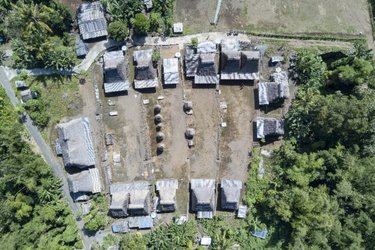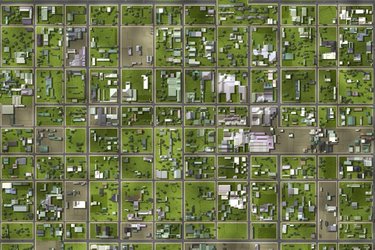Introduction
The International Committee of the Red Cross (ICRC) has developed an Artificial Intelligence (AI) model and a data platform in partnership with Engineering Universities in Switzerland to access precise and up-to-date population data for effective humanitarian planning and response. The AI model called POMELO (Population Mapping by Estimation of Local Occupancy Rates) provides fine-grained population maps to establish the size and density of these populations, as well as associated information such as settlement type and population increase or decrease at a resolution of 100 x 100 meters. While facing technical issues to operationalise the model, the ICRC developed a platform to guide users in the selection of adequate population datasets. The platform boosts ICRC’s capacity to plan and execute well-targeted humanitarian aid, allocate resources efficiently, and improve crisis response, ultimately ensuring more precise and impactful humanitarian interventions.
Background
The lack of accurate and up-to-date population data (census) is a critical challenge in planning and responding effectively to crises. Often data is outdated, not granular enough, or just not available at all due to conflict, instability, or other reasons. Humanitarians therefore use estimation methods such as counting roofs in satellite images and multiplying them with the average size of a household in the country. However, as Thao Ton-That Whelan, a GIS and remote sensing analyst at the ICRC, states:
"The roof counting is not enough to have a good estimation of the population because it's only a roof. You must know what type of roof it is. If it's like an administrative building, school, industrial building, or if it's a residential building, and if it's a residential building, if it is a one-story or two-story building".
To achieve a much higher precision in their population estimates, ICRC looked at how additional and more detailed data points might be used. Thus, POMELO was born.
AI development
Mapping and remote sensing through satellite imagery are methods widely used by non-profits to identify areas of intervention and plan these interventions as accurately as possible. There are multiple data sources that provide large amounts of data, and resources in data analytics teams are scarce. Thao Ton-That Whelan has therefore been looking at ways to employ AI to automate or semi-automate processing, combining and interpreting of data, so that she and her team can focus on in-depth analysis. On top of that, she was also looking at how machine learning might be used for the extrapolation of information that was not directly available.
POMELO is one example of this work. To build it, ICRC collaborated with theSwiss Federal Institute of Technology Lausanne (EPFL), and the Swiss Federal Institute of Technology Zürich (ETHZ), who brought their expertise in Machine Learning and AI development to the project. POMELO can generate population maps in a resolution of 100 x 100 meters, based on data sources such as open-source geospatial data and building data. In the absence of granular census data, which is not available in most countries, it uses this information to establish population density. Additional inputs such as distance to roads, elevation, and historical population data help refine the outcomes.

To ensure the model's accuracy, extensive testing was conducted across several countries in sub-Saharan Africa. By comparing POMELO's population maps to the most detailed existing population counts, the team found that POMELO's predictions were more precise. Notably, the model performs well with or without census data, as it can extrapolate using population data across other countries, but its accuracy significantly improves when such data is available.
Operationalising AI
The ICRC faced technical hurdles to implement the AI model past its development phase by the academic collaborators. Using POMELO requires a level of technical expertise which is challenging to develop and maintain internally. However, the development of the AI model motivated the ICRC to create an internal Population Grid Hub portal. Here, field staff can easily access and analyse population settlements and density in various regions. The portal homepage provides information about the tool, its purpose, and how it can be used. The Hub allows staff members to zoom into specific areas and draw the outline of a geographic area that they need to have population data for.
The Hub also provides access to freely available data on population, so that users on the ground may validate the output. Ultimatey, it is the user with their knowledge of the local context that decides which source is giving them the most reliable data for what they are trying to achieve. User feedback has been positive, particularly noting the time saved to establish the population data; for some selected places the accuracy of the algorithm’s output was measured and found to be good.
To further promote the use of the tool internally, ICRC has prepared comprehensive documentation and organised webinars for staff members. While the Hub is managed and used internally by ICRC, the POMELO model code itself is publicly available on GitHub and can be used by other organisations that grapple with the same issues in estimating population numbers.

Learnings
Once finished, the POMELO model was handed over to ICRC to maintain and support. This has proven a challenge as the code is complex and the team did not have the in-depth technical expertise required in-house. This gap has temporarily been filled through hiring a specialist contractor and ICRC is looking at options to sustain and improve POMELO in the longer term. This could include continuing the collaboration with ETHZ to leverage the institute’s knowledge and resources on an ongoing basis, which would ensure POMELO remains innovative and effective in various humanitarian contexts. The updated version of the model is accessible on GitHub to other humanitarian organisations who have the same need – this could serve to avoid duplication of efforts in solving a shared problem. While not all the project objectives were reached regarding the implementation of POMELO, the main outcome was successful: providing the tools for data-informed decision making through the data platform.
Plans for the future
In a related project, Thao Ton-That Whelan is looking to find ways to establish population movements, as this is something POMELO is not able to do with the data it uses. By analysing daily images of night lights provided by NASA, she hopes to find indications of both population movements and infrastructure damage. Night lights can be taken as a proxy of human presence, and when they are no longer visible, it may be an indication of damage, for example, to a power plant, which would then have a knock-on effect on people, healthcare, and so on, creating the need for intervention on the ground.
Where to learn more
Thao Ton That Whelan, ICRC GIS and remote sensing analyst,
